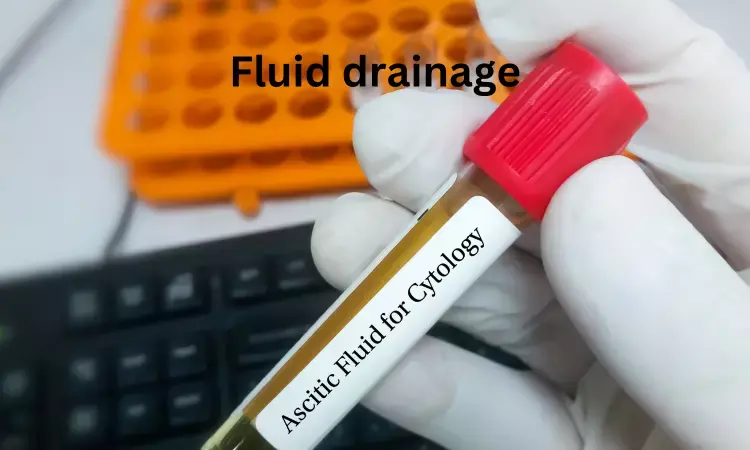- Home
- Medical news & Guidelines
- Anesthesiology
- Cardiology and CTVS
- Critical Care
- Dentistry
- Dermatology
- Diabetes and Endocrinology
- ENT
- Gastroenterology
- Medicine
- Nephrology
- Neurology
- Obstretics-Gynaecology
- Oncology
- Ophthalmology
- Orthopaedics
- Pediatrics-Neonatology
- Psychiatry
- Pulmonology
- Radiology
- Surgery
- Urology
- Laboratory Medicine
- Diet
- Nursing
- Paramedical
- Physiotherapy
- Health news
- Fact Check
- Bone Health Fact Check
- Brain Health Fact Check
- Cancer Related Fact Check
- Child Care Fact Check
- Dental and oral health fact check
- Diabetes and metabolic health fact check
- Diet and Nutrition Fact Check
- Eye and ENT Care Fact Check
- Fitness fact check
- Gut health fact check
- Heart health fact check
- Kidney health fact check
- Medical education fact check
- Men's health fact check
- Respiratory fact check
- Skin and hair care fact check
- Vaccine and Immunization fact check
- Women's health fact check
- AYUSH
- State News
- Andaman and Nicobar Islands
- Andhra Pradesh
- Arunachal Pradesh
- Assam
- Bihar
- Chandigarh
- Chattisgarh
- Dadra and Nagar Haveli
- Daman and Diu
- Delhi
- Goa
- Gujarat
- Haryana
- Himachal Pradesh
- Jammu & Kashmir
- Jharkhand
- Karnataka
- Kerala
- Ladakh
- Lakshadweep
- Madhya Pradesh
- Maharashtra
- Manipur
- Meghalaya
- Mizoram
- Nagaland
- Odisha
- Puducherry
- Punjab
- Rajasthan
- Sikkim
- Tamil Nadu
- Telangana
- Tripura
- Uttar Pradesh
- Uttrakhand
- West Bengal
- Medical Education
- Industry
Large volume fluid drainage without albumin infusion associated with complications in refractory ascites

Paracentesis is a common procedure performed to obtain a small sample of or drain ascitic fluid for both diagnostic or therapeutic purposes for ascites. Ascites is characterized by too much fluid build up in abdomen that often happens in people who have cirrhosis (scarring) of the liver.
Association of low-volume paracentesis of less than 5 L with complications in patients with ascites remains unclear, and individuals with cirrhosis and refractory ascites (RA) treated with devices like Alfapump or tunneled-intraperitoneal catheters perform daily low-volume drainage without albumin substitution.
In a cohort study of 250 patients with refractory ascites, drainage of 1.5 L/d or more was associated with a higher incidence of hyponatremia or acute kidney injury than drainage of less than 1.5 L/d. Drainage of 1.5 L/d or more was also linked to more complications, while this was not the case in those with drainage less than 1.5 L/d. The findings of the study are published in JAMA Network.
The researchers included retrospective cohort study of patients with liver cirrhosis, RA, and a contraindication for a transjugular intrahepatic portosystemic shunt who received either device implantation or standard of care (SOC; ie, repeated large-volume paracentesis with albumin infusion), and were hospitalized between 2012 and 2020 were included. Data were analyzed from April to October 2022. The primary end points were 90-day incidence of hyponatremia and AKI. Propensity score matching was performed to match and compare patients with devices and higher or lower drainage volumes to those who received SOC.
The key findings of the study are
• A total of 250 patients with RA receiving either device implantation (179 patients; 125 male; 54 female) or SOC (71 patients; 41 male; 20 female) were included in this study.
• A cutoff of 1.5 L/d or more was identified to estimate hyponatremia and AKI in the included patients with devices. Drainage of 1.5 L/d or more was associated with hyponatremia and AKI, even after adjusting for various confounders (hazard ratio [HR], 2.17 [95% CI, 1.24-3.78]; P = .006; HR, 1.43 [95% CI, 1.01-2.16]; P = .04, respectively).
• Moreover, patients with taps of 1.5 L/d or more and less than 1.5 L/d were matched with patients receiving SOC.
• Those with taps of 1.5 L/d or more had a higher risk of hyponatremia and AKI compared with those receiving SOC (HR, 1.67 [95% CI, 1.06-2.68]; P = .02 and HR, 1.51 [95% CI, 1.04-2.18]; P = .03), while patients with drainage of less than 1.5 L/d did not show an increased rate of complications compared with those receiving SOC.
Researchers concluded that “In this cohort study, clinical complications in patients with RA performing low-volume drainage without albumin infusion were associated with the daily volume drained. Based on this analysis, physicians should be cautious in patients performing drainage of 1.5 L/d or more without albumin infusion.”
Reference: Tergast TL, Griemsmann M, Stockhoff L, et al. Daily Low-Volume Paracentesis and Clinical Complications in Patients With Refractory Ascites. JAMA Netw Open. 2023;6(7):e2322048. doi:10.1001/jamanetworkopen.2023.22048.
MSc. Neuroscience
Niveditha Subramani a MSc. Neuroscience (Faculty of Medicine) graduate from University of Madras, Chennai. Ambitious in Neuro research having worked in motor diseases and neuron apoptosis is interested in more of new upcoming research and their advancement in field of medicine. She has an engrossed skill towards writing and her roles at Medical dialogue include Sr. Content writer. Her news covers new discoveries and updates in field of medicine. She can be reached at editorial@medicaldialogues.in
Dr Kamal Kant Kohli-MBBS, DTCD- a chest specialist with more than 30 years of practice and a flair for writing clinical articles, Dr Kamal Kant Kohli joined Medical Dialogues as a Chief Editor of Medical News. Besides writing articles, as an editor, he proofreads and verifies all the medical content published on Medical Dialogues including those coming from journals, studies,medical conferences,guidelines etc. Email: drkohli@medicaldialogues.in. Contact no. 011-43720751


